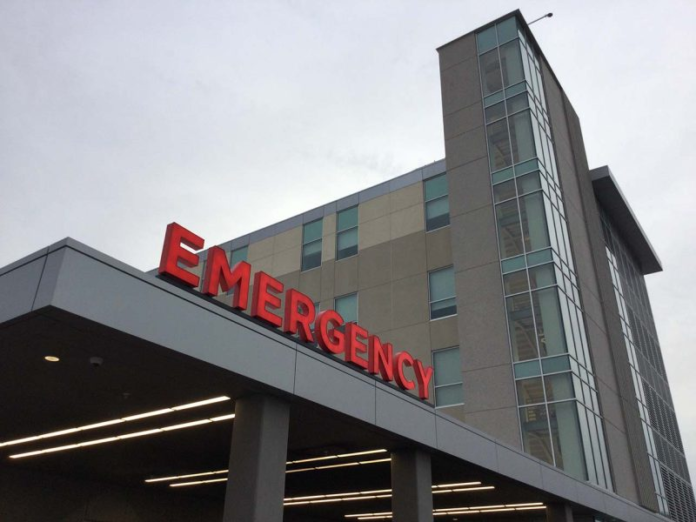Story at a glance
Candida auris, or C. auris, is a fungus that can cause infections in people.
It is one of five superbugs identified in 2019 by the Centers for Disease Control and Prevention (CDC) as “urgent.”
In April of this year, the CDC reported that 16% of all C. auris cases nationwide were in Nevada. And now cases reported in September (167) and October (180) set records in Nevada.
LAS VEGAS (KLAS) — A “superbug” that can cause severe infections in hospital patients is on the rise in Nevada health care facilities.
Information obtained by Nexstar’s KLAS from the Nevada Department of Health and Human Services shows Candida auris, or C. auris, has been found at 42 facilities, with Sunrise Hospital and Medical Center in Las Vegas experiencing the highest levels — nearly 500 total cases.
C. auris is a fungus that is easily spread. It is one of five superbugs identified in 2019 by the Centers for Disease Control and Prevention (CDC) as “urgent.” They are so-called “superbugs” because they are hard to kill with existing drugs.
In 2022, the CDC reported there were 2,377 clinical cases and 5,754 screening or colonization cases — where the fungus was present but had not caused an infection — in the U.S. In Nevada alone, there were 384 clinical cases reported, more than any other state (California was close behind at 359).
In April of this year, the CDC reported that 16% of all C. auris cases nationwide were in Nevada. That statistic might change as the fungus is detected more often in states with higher populations, but cases here continue to grow according to current reports.
Cases reported in September (167) and October (180) set records in Nevada. DHHS noted that data might be incomplete for the past three months, with more cases possible as reports are processed.
(Graphic: Nevada Department of Health and Human Services)
A total of 1,313 cases have been reported in Nevada so far in 2023. Of those, 492 were clinical cases and 821 were “colonization” cases. At this time last year, Nevada had reported a total of 774 cases on the year. Since then, the fungus has been found at 16 more facilities — now a total of 42 sites, mostly in Southern Nevada.
The October report of 57 reported infections — all clinical cases — is the highest monthly count so far in Nevada.
A factor in the higher number of cases: testing for C. auris is more common than it was last year. As attention to the fungus increased over the past year and a half, patients in hospitals for other problems are tested more routinely when doctors suspect it is present. The number of cases does not reflect the number of people affected, as one person may sometimes have both a colonized case and a clinical case.
DHHS provided a list of 17 acute-care hospitals, 15 skilled nursing facilities, and 10 long-term acute-care hospitals where 2,273 cases (historical totals, August 2021-October 2023) have been reported. Colonization cases account for just over 60% of all cases, with clinical cases just under 40%. Cases overall have grown 193% since November of 2022.
Sunrise Hospital and Medical Center has reported the highest totals, with 496 (306 clinical/190 colonization). That’s nearly 22% of the cases statewide. Valley Hospital Medical Center (224) has had the second-most cases and Kindred Hospital Flamingo is third. Kindred is a long-term acute-care facility. The full list:
Patients who need catheters are at higher risk of infection because the fungus can be present on surfaces, getting into the bloodstream during invasive procedures. Men are diagnosed with C. auris more often than women, with about 60% of the cases involving men. About 87% of the cases occur in patients at least 50 years old.
Colonization cases have grown faster than clinical cases, and three long-term care facilities factored into that growth. Kindred Hospital Flamingo (154) and two Horizon Specialty Hospital sites — one in Henderson (135) and one in Las Vegas (105) — all had more than 100 colonization cases.
Infections are more serious than colonization cases, and those clinical cases occur most often in hospitals. The balance of colonization versus clinical cases was notable in hospitals.
Sunrise’s high number of clinical cases (306) outnumbered colonization cases by more than a 3-to-2 margin. And while University Medical Center reported fewer clinical cases (55), they outnumbered colonization reports by nearly 7 to 1.
When initial reports about C. auris in Las Vegas made news last year, 63 deaths were associated with the 774 cases. But that doesn’t mean the deaths were caused by the fungal infection. The fungus was present but was not necessarily the cause of death.
KLAS has asked DHHS for an update related to deaths, but that information is not yet available.
There were cases reported in 28 states and the District of Columbia last year, according to the CDC. In addition to Nevada, the hardest hit were California (359 cases), Florida (349), New York (326), Illinois (276), and Texas (160).
As of Nov. 4, data shows 2,516 clinical and 1,564 screening cases of C. auris have been reported in the U.S. this year, though the CDC notes the data can vary because case details from state and local health departments are voluntarily submitted and can change based on investigations.
For example, just one clinical case and zero screening cases are listed for Nevada. California, meanwhile, has reported more than 1,000 clinical cases while Texas has reported over 500 screening cases.
Copyright 2023 Nexstar Media Inc. All rights reserved. This material may not be published, broadcast, rewritten, or redistributed.




